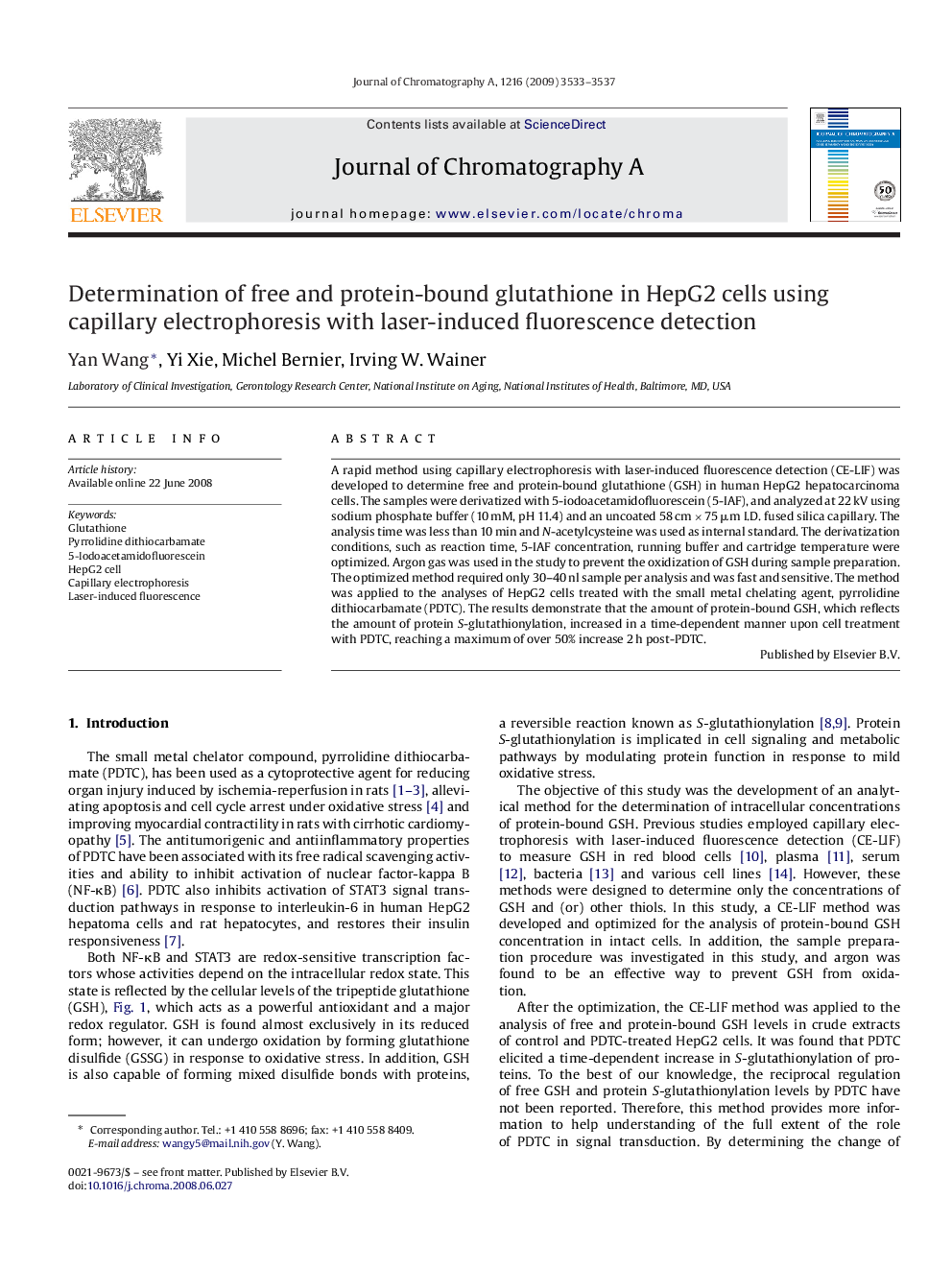| Article ID | Journal | Published Year | Pages | File Type |
|---|---|---|---|---|
| 1206912 | Journal of Chromatography A | 2009 | 5 Pages |
A rapid method using capillary electrophoresis with laser-induced fluorescence detection (CE-LIF) was developed to determine free and protein-bound glutathione (GSH) in human HepG2 hepatocarcinoma cells. The samples were derivatized with 5-iodoacetamidofluorescein (5-IAF), and analyzed at 22 kV using sodium phosphate buffer (10 mM, pH 11.4) and an uncoated 58 cm × 75 μm I.D. fused silica capillary. The analysis time was less than 10 min and N-acetylcysteine was used as internal standard. The derivatization conditions, such as reaction time, 5-IAF concentration, running buffer and cartridge temperature were optimized. Argon gas was used in the study to prevent the oxidization of GSH during sample preparation. The optimized method required only 30–40 nl sample per analysis and was fast and sensitive. The method was applied to the analyses of HepG2 cells treated with the small metal chelating agent, pyrrolidine dithiocarbamate (PDTC). The results demonstrate that the amount of protein-bound GSH, which reflects the amount of protein S-glutathionylation, increased in a time-dependent manner upon cell treatment with PDTC, reaching a maximum of over 50% increase 2 h post-PDTC.
